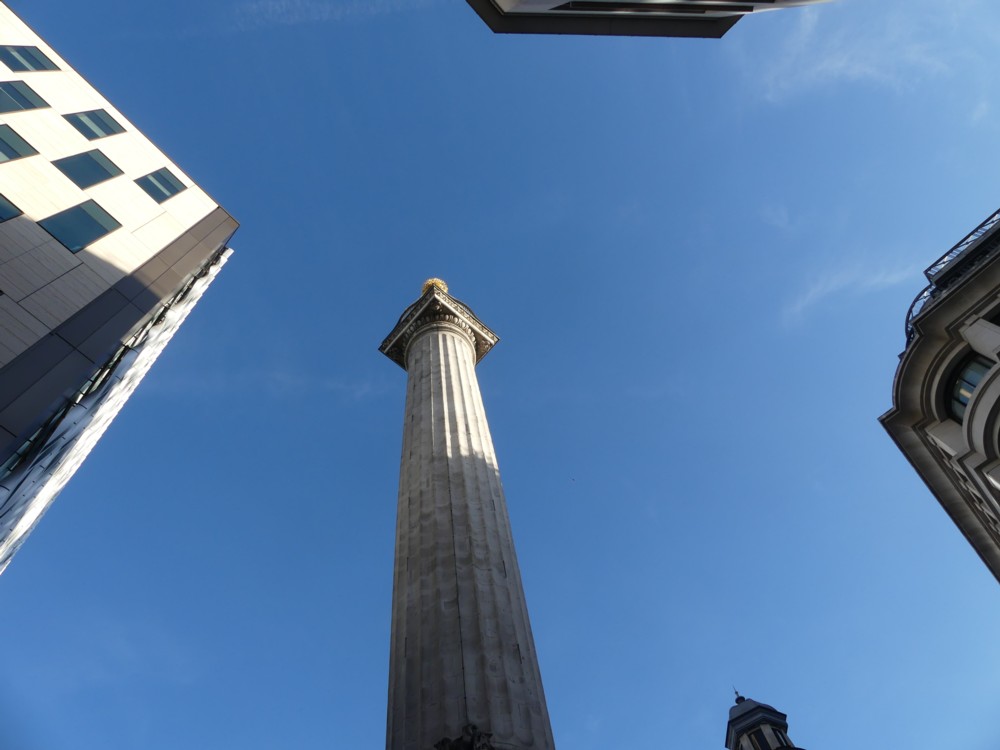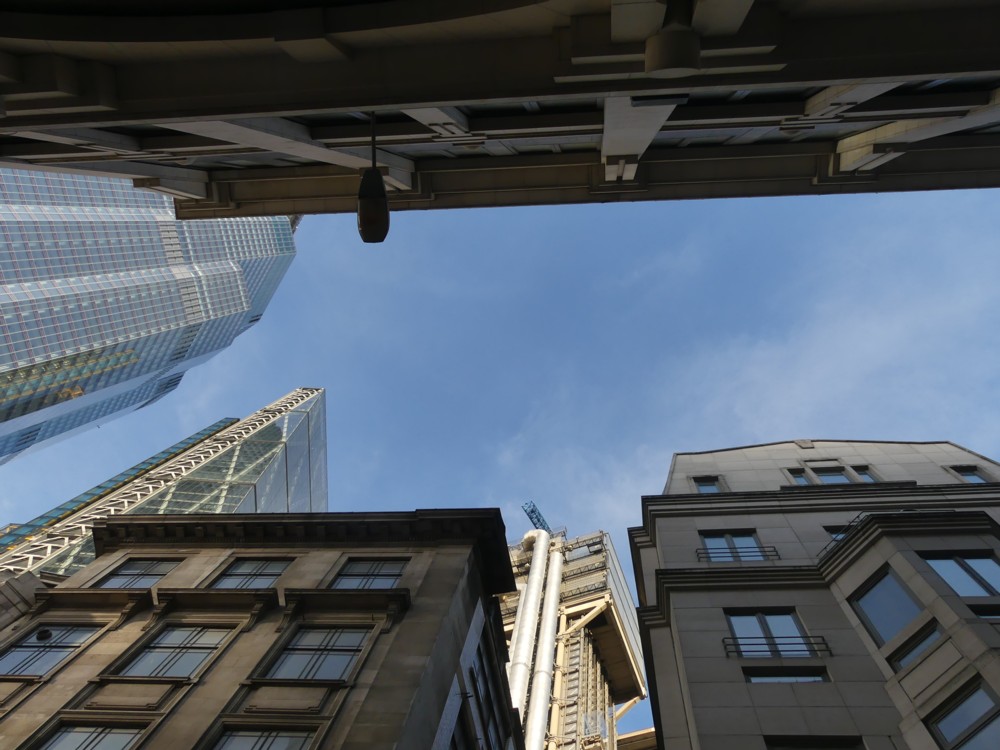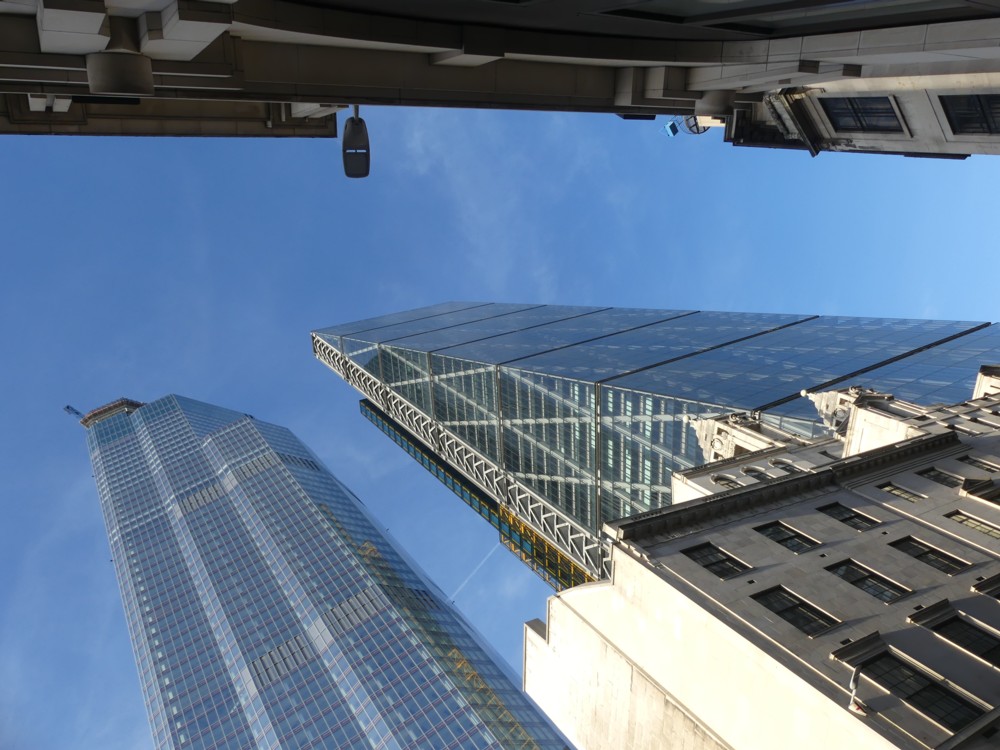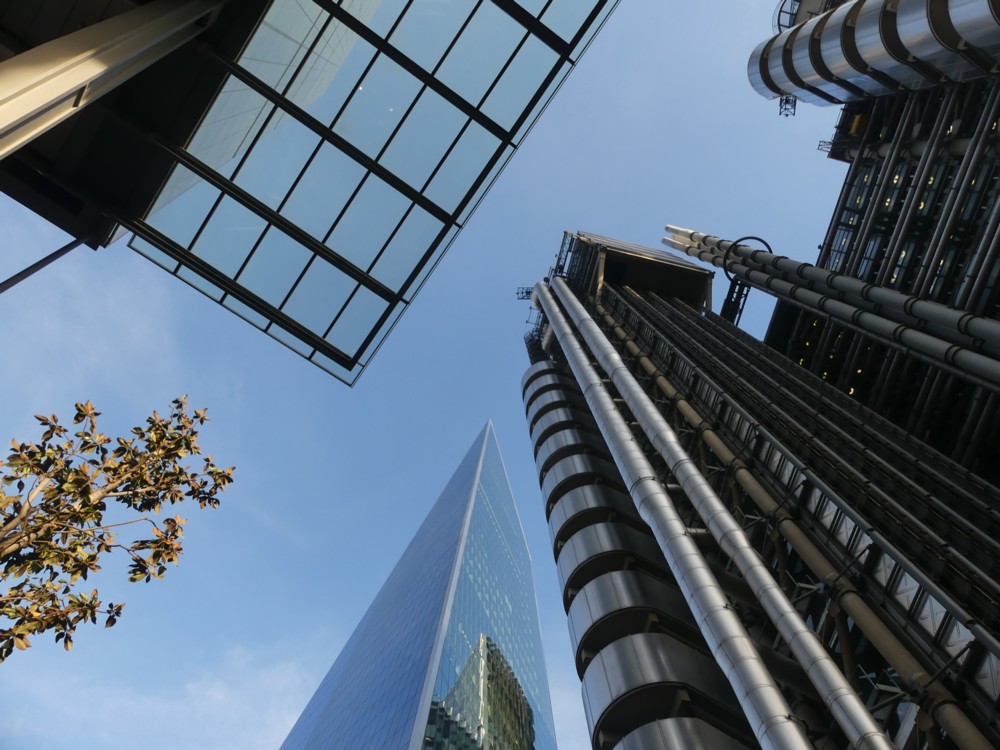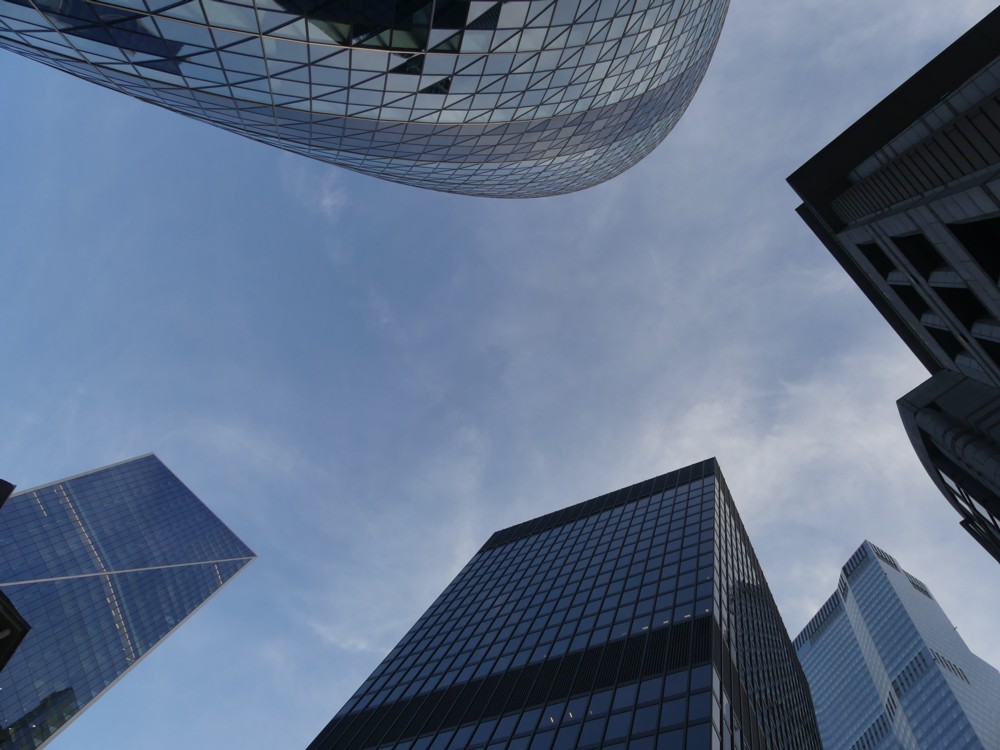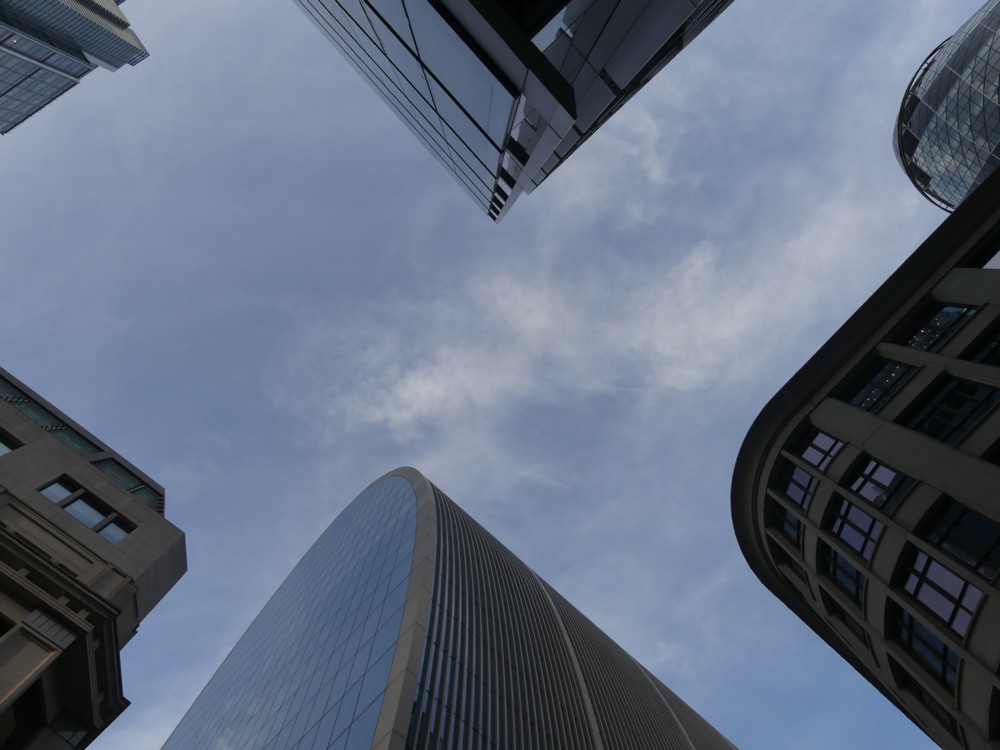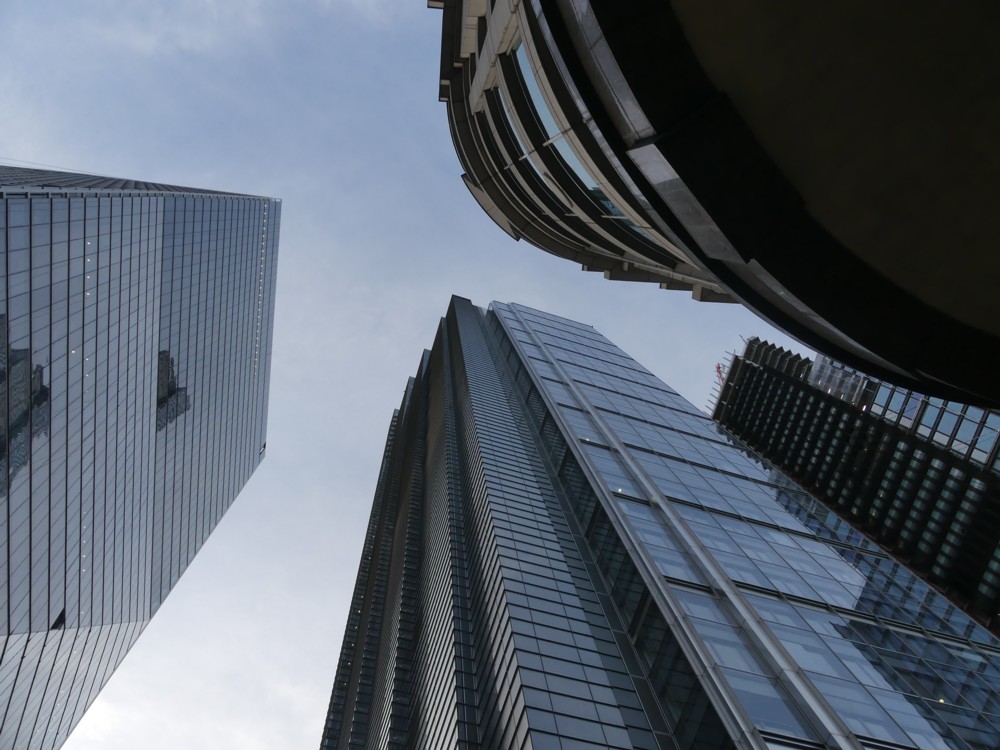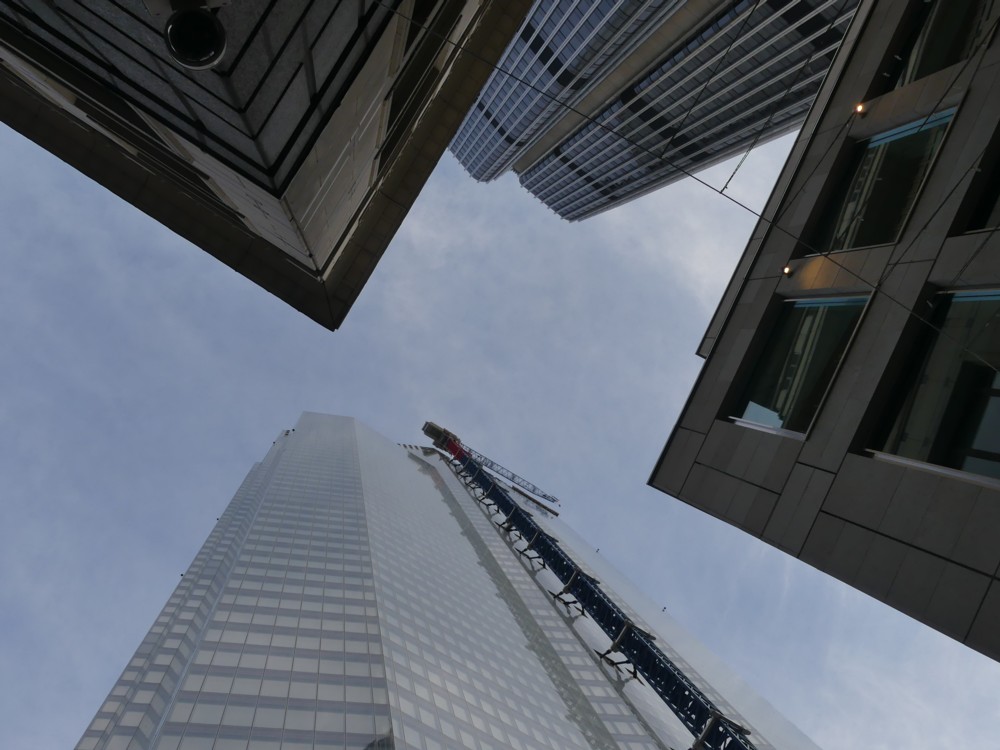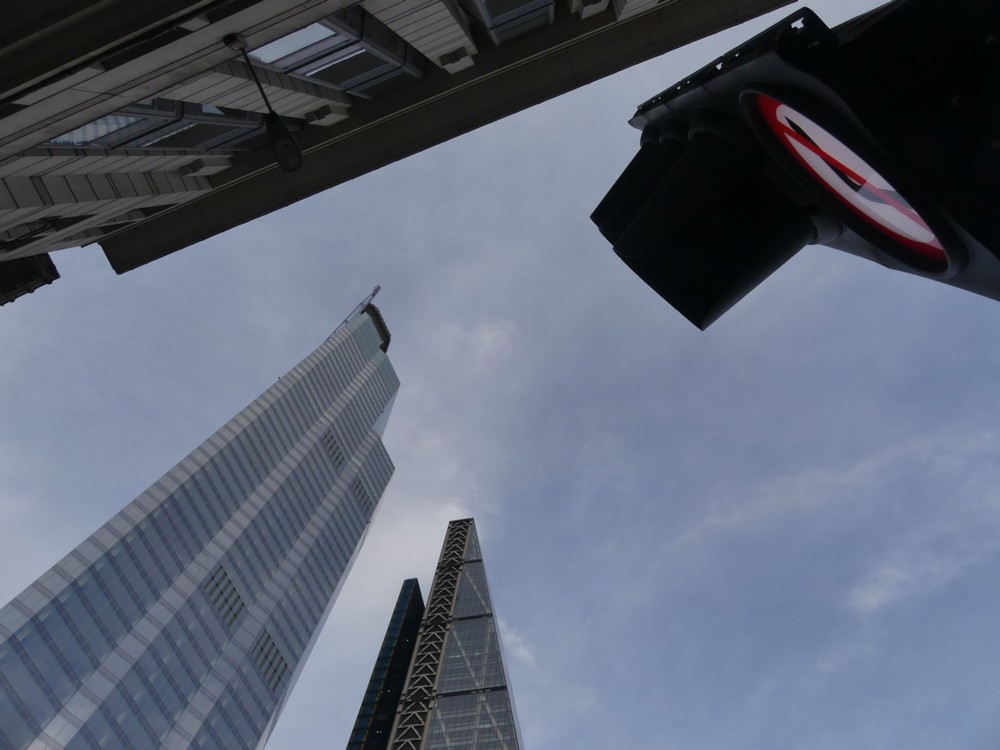I called them “LookingUpInTheCity” but of course I was really photoing up, photoing photos like these:
Spot the Big Things.
For a photo to be included in this clutch of photos, the camera had to be really looking up. Which, or such is my preliminary ruling, there have to be things disappearing off the page, so to speak, in all directions.
I further hypothesise that this means that these photos have no up or down embedded in them. They could be rotated through 90 degrees, or 180 or 270, and we’d not know that this had happened.
The same applies, now I think about it, of photos pointing straight downwards at the ground.
I like these kind of photos for many reasons. One of them is that it turns real world things into abstract patterns. When you look at such photos, especially when you look at the small versions of them that you see in this blog posting, before you open up the photos and start clicking on them, you tend to see not recognisable Big Things, but abstract patterns, not unlike certain flags, such as the English flag and the Scottish flag.
Part of the reason we don’t recognise the Big Things so readily, and instead have to “spot” them (see above), is that we are not used to looking at them in a concentrated manner, in the way that a camera does and that my camera did, from directly below. Oh, we catch glimpses that look like this, but are not good at holding our heads still, in the required uncomfortable posture, so we don’t freeze the image.
It is a lot easier to photo such photos if you have a twiddly screen, as I always make a point of having on all the cameras I buy. With a twiddly screen, you can point your camera straight upwards, but contemplate the screen in the familiar and comfortable way, in just the same way as you would if the camera is pointing in its regular sideways sort of direction.
Strange how “look up” means two quite distinct things.

